- Home
- Stephen Baxter
Space m-2 Page 8
Space m-2 Read online
Page 8
“Jesus, Malenfant. You’re a kind of gray cyborg, aren’t you? You’re really determined.”
“Look, microgravity is actually a pretty forgiving environment for an old man.”
“Until you want to return to a full Earth gravity.”
“Well, maybe I don’t.”
After two hundred and sixty days, halfway into the mission, the fusion pulse engine shut down. The tiny acceleration faded, and Malenfant’s residual sense of up and down disappeared. Oddly, he felt queasy; a new bout of space adaptation syndrome floored him for four hours.
Meanwhile, the Perry fired its nitrogen tet and hydrazine reaction control thrusters, and turned head over heels. It was time to begin the long deceleration to the solar focus.
The Perry, at peak velocity now, was travelling at around seven million meters per second. That amounted to 2 percent of the speed of light. At such speeds, the big superconducting hoops came into their own. They set up a plasma shield forward of the craft, which sheltered it from the thin interstellar hydrogen it ran into. This turnaround maneuver was actually the most dangerous part of the trajectory, when the plasma field needed some smart handling to keep it facing ahead at all times.
The Perry was by far the fastest man-made object ever launched, and so — Malenfant figured, logically — he had become the fastest human. Not that anyone back home gave a damn.
That suited him. It clarified the mind.
Beyond the windows now there was only blackness falling between Malenfant and the stars. At five hundred astronomical units from the Sun, he was far beyond the last of the planets; even Pluto reached only some forty astronomical units. His only companions out here were the enigmatic ice moons of the Kuiper Belt, fragments of rock and ice left undisturbed since the birth of the Sun, each of them surrounded by an emptiness wider than all the inner Solar System. Farther beyond lay the Oort cloud, the shadowy shell of deep-space comets; but the Oort’s inner border, at some thirty thousand astronomical units, was beyond even the reach of this attenuated mission.
When the turnaround maneuver was done, he turned his big telescopes and instrument platforms forward, looking ahead to the solar focus.
“You must want to come home. You must have family.”
“No.”
“And now—”
“Look, Sally, all we’ve done since finding the Gaijin is talk, for twelve years. Somebody ought to do something. Who better than me? And so I’m going to the edge of the system, where I expect to encounter Gaijin.” He grinned. “I figure I’ll cross all subsequent bridges when I come to them.”
“Godspeed, Malenfant,” she said, chilled. She sensed she would never see him again.
The Perry slowed to a relative halt. From a thousand AU, the Sun was an overbright star in the constellation Cetus, and the inner system — planets, humans, Gaijin, and all — was just a puddle of light.
Malenfant, cooped up in his hab module, spent a week scanning his environment. He knew he was in the right area, roughly; the precision was uncertain. Of course, if some huge interstellar mother craft was out here, it should be hard to miss.
There wasn’t a damn thing.
He went in search of Alpha Centauri’s solar focus. He nudged the Perry forward, using his reaction thrusters and occasional fusion-pulse blips.
The focusing of gravitational lensing was surprisingly tight. Alpha Centauri’s focal-point spot was only a few kilometers across, in comparison with the hundred billion kilometers Malenfant had crossed to get here.
He took his time, shepherding his fuel.
At last he had it. In his big optical telescope there was an image of Alpha Centauri A, the largest component of the multiple Alpha system. The star’s image was distorted into an annulus, a faintly orange ring of light.
He recorded as much data as he could and fired it down his laser link to Earth. The processors there would be able to deconvolve the image and turn it into an image of the multiple-star Alpha Centauri system, perhaps even of any planets hugging the two main stars.
This data alone, he thought, ought to justify the mission to its sponsors.
But he still didn’t turn up any evidence of Gaijin activity.
A new fear started to gnaw at him. For the first time he considered seriously the possibility that he might be wrong about this. What if there was nothing here, after all? If so, his life, his reputation, would be wasted.
And then his big supercooled infrared sensors picked up a powerful new signature.
The object passed within a million kilometers of him.
His telescopes returned images, tantalizingly blurred. The thing was tumbling, sending back glimmering reflections from the remote Sun; the reflections helped the processors figure out its shape.
The craft was maybe fifty meters across. It was shaped something like a spider. A dodecahedral central unit sprouted arms, eight or ten of them, that articulated as it moved. It seemed to be assembling itself as it traveled.
It wasn’t possible to identify its purpose, or composition, or propulsion method, before it passed out of sight. But he was prepared to bet it was heading for the asteroid belt.
It was possible to work out where the drone had come from. It was a point along the Sun’s focal line, farther out, a point no more distant from the Perry than the Moon from Earth.
Malenfant turned his telescopes that way, but he couldn’t see a thing.
Still, he felt affirmed. Contact, by damn. I was right. I can’t figure out how or what, but there sure is something out here.
He powered up his fusion-pulse engine, one more time. It would take him twenty hours to get there.
It was just a hoop, some kind of metal perhaps, facing the Sun. It was around thirty meters across, and it was sky blue, the color dazzling out here in the void. It was silent, not transmitting on any frequency, barely visible at all in the light of the point-source Sun.
There was no huge mother ship emitting asteroid-factory drones. Just this enigmatic artifact.
He described all this to Sally Brind, back in Houston. He would have to wait for a reply; he was six light-days from home.
After a time, he decided he didn’t want to wait that long.
The Perry drifted beside the Gaijin hoop, with only occasional station-keeping bursts of its thrusters.
Malenfant shut himself up inside the Perry ’s cramped air lock. He’d have to spend two hours in here, purging the nitrogen from his body. His antique shuttle-class EVA mobility unit would contain oxygen only, at just a quarter of sea-level pressure, to keep it flexible.
Malenfant pulled on his thermal underwear, and then his cooling and ventilation garment — a corrugated layering of water-coolant pipes. He fitted his urine-collection device, a huge, unlikely condom.
He lifted up his lower torso assembly — this was the bottom half of his EMU, trousers with boots built on — and he squirmed into it. He fitted a tube over his condom attachment; there was a bag sewn into his lower torso assembly garment big enough to store a couple of pints of urine. The LTA unit was heavy, the layered material awkward and stiff. Maybe I’m not in quite the same shape as I used to be, forty years ago.
Now it was time for the HUT, the hard upper torso piece. His HUT was fixed to the wall of the air lock, like the top half of a suit of armor. He crouched underneath, reached up his arms, and wriggled upward. Inside the HUT there was a smell of plastic and metal. He guided the metal rings at his waist to mate and click together. He fixed on his Snoopy flight helmet, and over the top of that he lifted his hard helmet with its visor, and twisted it into place against the seal at his neck.
The ritual of suit assembly was familiar, comforting. As if he was in control of the situation.
He studied himself in the mirror. The EMU was gleaming white, with the Stars and Stripes still proudly emblazoned on his sleeve. He still had his final mission patch stitched to the fabric, for STS-194. Looking pretty good for an old bastard, Malenfant.
Just before he depressurize
d, he tucked his snap of Emma into an inside pocket.
He opened the air lock’s outer hatch.
For twenty months he’d been confined within a chamber a few meters across; now his world opened out to infinity.
He didn’t want to look up, down, or around, and certainly not at the Gaijin artifact. Not yet.
Resolutely he turned to face the Perry. The paintwork and finishing over the hull’s powder-gray meteorite blanket had pretty much worn away and yellowed, but the dim sunlight made it look as if the whole craft had been dipped in gold.
His MMU, the manned maneuvering unit, was stowed in a service station against the Perry ’s outer hull, under a layer of meteorite fabric. He uncovered the MMU and backed into it; it was like fitting himself into the back and arms of a chair. Latches clasped his pressure suit. He powered up the control systems and checked the nitrogen-filled fuel tanks in the backpack. He pulled his two hand controllers around to their flight positions, then released the service station’s captive latches.
He tried out the maneuvering unit. The left hand controller pushed him forward, gently; the right hand enabled him to rotate, dip, and roll. Every time a thruster fired, a gentle tone sounded in his headset.
He moved in short straight lines around the Perry. After years in a glass case at KSC, not all of the pack’s reaction-control thrusters were working. But there seemed to be enough left for him to control his flight. And the automatic gyro stabilization was locked in.
It was just like working around the shuttle, if he focused on his immediate environment. But the light was odd. He missed the huge, comforting presence of the Earth; from low Earth orbit, the daylit planet was a constant, overwhelming presence, as bright as a tropical sky. Here there was only the Sun, a remote point source that cast long, sharp shadows; and all around he could see the stars, the immensity that surrounded him.
Now, suddenly — and for the first time in the whole damn mission — fear flooded him. Adrenaline pumped into his system, making him feel fluttery as a bird, and his poor old heart started to pound.
Time to get with it, Malenfant.
Resolutely, he worked his right hand controller, and he turned to face the Gaijin artifact.
The artifact was a blank circle, mysterious, framing only stars. He could see nothing that he hadn’t seen through the Perry ’s cameras, truthfully; it was just a ring of some shining blue material, its faces polished and barely visible in the wan light of the Sun.
But that interior looked jet black, not reflecting a single photon cast by his helmet lamp.
He glared into the disc of darkness. What are you for? Why are you here?
There was, of course, no reply.
First things first. Let’s do a little science here.
He pulsed his thrusters and drifted toward the hoop itself. It was electric blue, glowing as if from within, a wafer-thin band the width of his palm. He could see no seams, no granularity.
He reached out a gloved hand, spacesuit fabric encasing monkey fingers, and tried to touch the hoop. Something invisible made his hand slide away, sideways.
No matter how hard he pushed, how he braced himself with the thrusters, he could get his glove no closer than a millimeter or so from the material. And always that insidious, soapy feeling of being pushed sideways.
He tried running his hand up and down, along the hoop. There were… ripples, invisible but tangible.
He drifted back to the center of the hoop. That sheet of silent darkness faced him, challenging. He cast a shadow on the structure from the distant pinpoint Sun. But where the light struck the hoop’s dark interior, it returned nothing: not a highlight, not a speckle of reflection.
Malenfant rummaged in a sleeve pocket with stiff, gloved fingers. He held up his hand to see what he had retrieved. It was his Swiss Army knife. He threw the knife, underhand, into the hoop.
The knife sailed away in a straight line.
When it reached the black sheet it dimmed, and it seemed to Malenfant that it became reddish, as if illuminated by a light that was burning out.
The knife disappeared.
Awkwardly, pulsing his thrusters, he worked his way around the artifact. The MMU was designed to move him in a straight line, not a tight curve; it took some time.
On the far side of the artifact, there was no sign of the knife.
A gateway, then. A gateway, here at the rim of the Solar System. How appropriate, he thought. How iconic.
Time to make a leap of faith, Malenfant. He fired his RCS and began to glide forward.
The gate grew, in his vision, until it was all around him. He was going to pass through it — if he kept going — somewhere near the center.
He looked back at the Perry. Its huge, misty main antenna was pointed back toward Earth, catching the light of the Sun like a spider web. He could see instrument pallets held away from the hab module’s yellowed, cloth-clad bulk, like rear-view mirrors. The pallets were arrays of lenses, their black gazes uniformly fixed on him.
Just one press of his controller and he could stop right here, go back.
He reached the center of the disc. An electric blue light bathed him. He leaned forward inside his stiff HUT unit, so he could look up.
The artifact had come to life. The electric blue light was glowing from the substance of the circle itself. He could see speckles in the light. Coherent, then. And when he looked down at his suit, he saw how the white fabric was crisscrossed by the passage of dozens of points of electric blue glow.
Lasers. Was he being scanned?
“This changes everything,” he said.
The blue light increased in intensity, until it blinded him. There was a single instant of pain—
Chapter 6
Transmission
“We think a Gaijin flower-ship is a variant of the old Bussard ramjet design,” Sally Brind said. She had spread a fold-up softscreen over one time-smoothed wall of Nemoto’s lunar cave. Now — Maura squinted to see — the screen filled up with antique design concepts: line images of gauzy, unlikely craft, obsessively labeled with captions and arrows. “It is a notion that goes back to the 1960s…”
Nemoto’s home — here on the Japanese Moon, deep in Farside — had turned out to be a crude, outmoded subsurface shack close to the infrared observatory where she’d made her first discovery of Gaijin activity in the belt. Here, it seemed, Nemoto had lived for the best part of two decades. Maura thought she couldn’t stand it for more than a couple of hours.
There wasn’t even anywhere to sit, aside from Nemoto’s low pallet, Maura had immediately noticed, and both Sally and Maura had carefully avoided that. Fortunately the Moon’s low gravity made the bare rock floor relatively forgiving, even for the thin flesh that now stretched over Maura’s fragile bones. There were some concessions to humanity — an ancient and worn scrap of tatami, a tokonoma alcove containing a jinja — a small, lightweight Shinto shrine. But most of the floor and wall space, even here in Nemoto’s living area, was taken up with science equipment: anonymous white boxes that might have been power sources or sensors or sample boxes, cables draped over the floor, a couple of small, old-fashioned softscreens.
As Sally spoke, Nemoto — thin, gaunt, eyes invisible within dark hollows — pottered about her own projects. Walking with tiny, cautious steps, she minutely adjusted her equipment — or, bizarrely, watered the small plants that flourished on brackets on the walls, bathed by light from bright halide lamps.
Still, the languid flow of the water from Nemoto’s can — great fat droplets oscillating as they descended toward the tiny green leaves — was oddly soothing.
Sally continued her analysis of the Gaijin’s putative technology. “The ramjet was always seen as one way to meet the challenge of interstellar journeys. The enormous distances even to the nearest stars would require an immense amount of fuel. With a ramjet, you don’t need to carry any fuel at all.
“Space, you see, isn’t empty. Even between the stars there are tenuous clouds of gas,
mostly hydrogen. Bussard, the concept originator, proposed drawing in this gas, concentrating it, and pushing it into a fusion reaction — just as hydrogen is burned into helium at the heart of the Sun.
“The trouble is, those gas clouds are so thin your inlet scoop has to be gigantic. So Bussard suggested using magnetic fields to pull in gas from an immense volume, hundreds of thousands of kilometers around.”
She brought up another picture: an imaginary starship startlingly like a marine creature — a squid, perhaps, Maura thought — a cylindrical body with giant outreaching magnetic arms, preceded by darting shafts of light.
“The interstellar gas would first have to be electrically charged, to be deflected by the magnetic scoops. So you would pepper it with laser beams, as you see here, to heat it to a plasma, as hot as the surface of the Sun. It’s an exotic, difficult concept, but it’s still easier than hauling along all your fuel.”
“Except,” Nemoto murmured, laboring at her gadgets, “that it could never work.”
“Correct…”
Maura had been privy to similar breakdowns and extrapolations emanating from the Department of Defense and the U.S. Air and Space Force, and — given that Sally’s summary was based on no more than piecework by various space buff special-interest groups and NASA refugees in various corners of the Department of Agriculture — Maura thought it hung together pretty well.
The problem with Bussard’s design was that only a hundredth of all that incoming gas could actually be used as fuel. The rest would pile up before the accelerating craft, clogging its magnetic intakes; Bussard’s beautiful ship would expend so much energy pushing through this logjam it could never achieve the kind of speeds essential for interstellar flight.
Sally presented various developments of the basic proposal to get around this fundamental limitation. The most promising was called RAIR — pronounced “rare” — for Ram-Augmented Interstellar Rocket. Here, the intake of interstellar hydrogen would be greatly reduced, and would be used only to top up a store of hydrogen fuel the starship was already carrying. It was thought that the RAIR design could perform two or three times better than the Bussard system, and achieve perhaps 10 or 20 percent of the speed of light.

 The Martian in the Wood
The Martian in the Wood THE H-BOMB GIRL
THE H-BOMB GIRL World Engine
World Engine Titan n-2
Titan n-2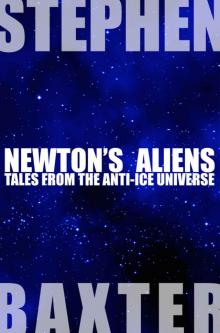 Newton's Aliens: Tales From the Anti-Ice Universe
Newton's Aliens: Tales From the Anti-Ice Universe Exultant
Exultant Manifold: Origin
Manifold: Origin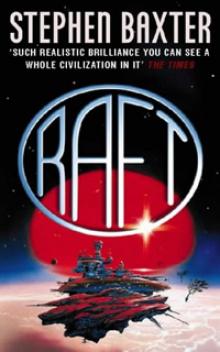 Raft xs-1
Raft xs-1 Bronze Summer n-2
Bronze Summer n-2 Transcendent
Transcendent Stone Spring
Stone Spring Coalescent
Coalescent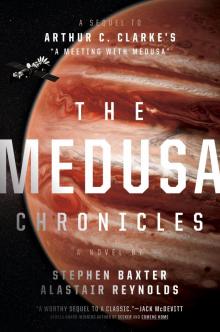 The Medusa Chronicles
The Medusa Chronicles Origin m-3
Origin m-3 Silverhair tm-1
Silverhair tm-1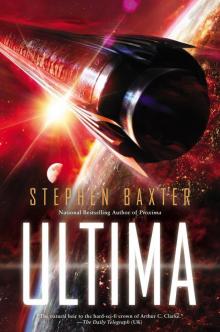 Ultima
Ultima Voyage n-1
Voyage n-1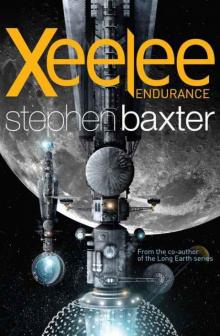 Xeelee: Endurance
Xeelee: Endurance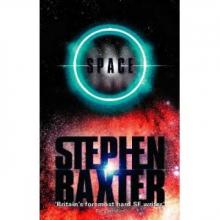 Space m-2
Space m-2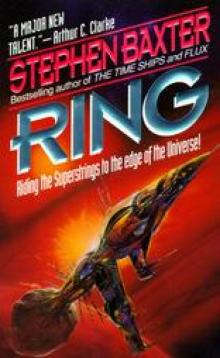 Ring xs-4
Ring xs-4 Raft
Raft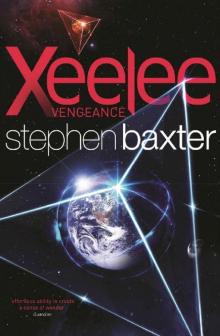 Xeelee: Vengeance
Xeelee: Vengeance Iron Winter n-3
Iron Winter n-3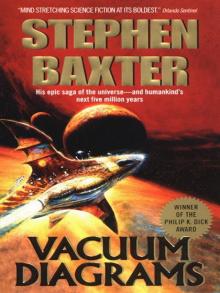 Vacuum Diagrams
Vacuum Diagrams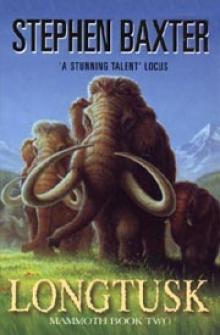 Longtusk tm-2
Longtusk tm-2 Proxima
Proxima Evolution
Evolution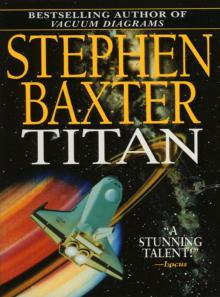 Titan
Titan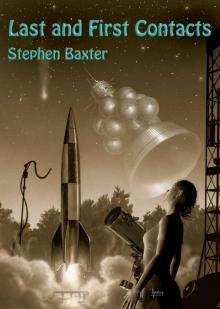 Last and First Contacts (Imaginings)
Last and First Contacts (Imaginings) Emperor
Emperor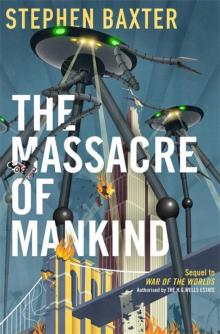 The Massacre of Mankind
The Massacre of Mankind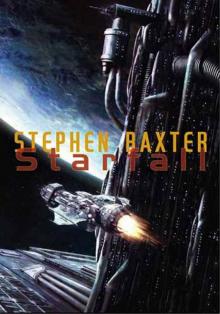 Starfall
Starfall Doctor Who - The Wheel of Ice
Doctor Who - The Wheel of Ice Longtusk
Longtusk Silverhair
Silverhair Conqueror tt-2
Conqueror tt-2 Flood
Flood Flood f-1
Flood f-1 Emperor tt-1
Emperor tt-1 Moonseed
Moonseed Conqueror
Conqueror Timelike Infinity xs-2
Timelike Infinity xs-2 The Ghost Pit
The Ghost Pit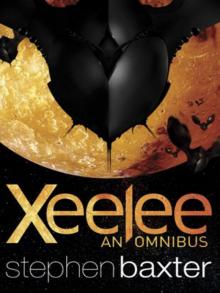 Xeelee: An Omnibus: Raft, Timelike Infinity, Flux, Ring
Xeelee: An Omnibus: Raft, Timelike Infinity, Flux, Ring Weaver tt-4
Weaver tt-4 Landfall: Tales From the Flood/Ark Universe
Landfall: Tales From the Flood/Ark Universe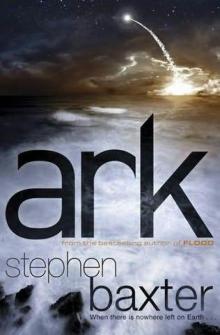 Ark
Ark Emperor: Time’s Tapestry Book One
Emperor: Time’s Tapestry Book One Space
Space Icebones
Icebones Manifold: Space
Manifold: Space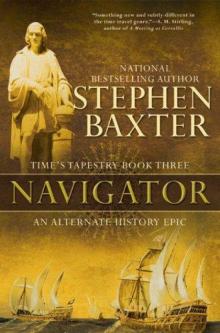 Navigator
Navigator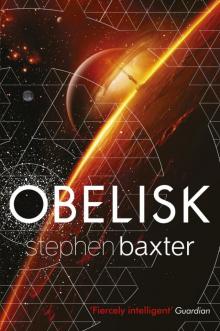 Obelisk
Obelisk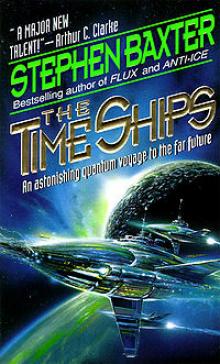 The Time Ships
The Time Ships Bronze Summer
Bronze Summer Resplendent
Resplendent Moonseed n-3
Moonseed n-3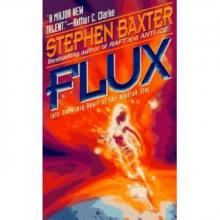 Flux xs-3
Flux xs-3 Transcendent dc-3
Transcendent dc-3 Icebones tm-3
Icebones tm-3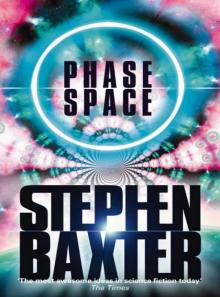 Phase Space
Phase Space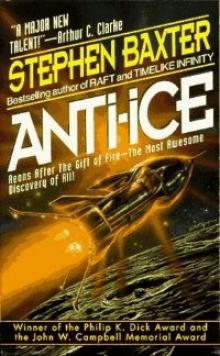 Anti-Ice
Anti-Ice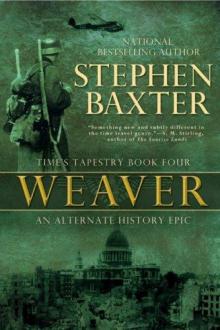 Weaver
Weaver Voyage
Voyage Time m-1
Time m-1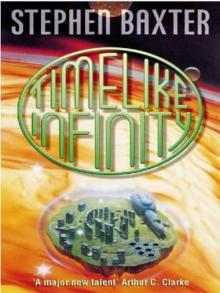 Timelike Infinity
Timelike Infinity Exultant dc-2
Exultant dc-2 Coalescent dc-1
Coalescent dc-1 Navigator tt-3
Navigator tt-3